Part five sees us return to Mini’s training programme and address a couple of issues highlighted during her initial hunt. Mini did very well on this first time out and Dave came away with fallow meat in the freezer; however, the experience identified a couple of areas needing work. In this issue, we’ll also look at how to train your dog to be ‘Target Specific’ and refrain from pursuing non-target odours while hunting.
Throughout this series, we’ve discussed the importance humility plays in becoming a good dog trainer – the ability to look inwardly and see how we have influenced the outcome when things don’t go to plan. Because of Dave’s humility, we were able to dissect his first hunt with Mini and see where training opportunities existed. We ran a reflection session to explore what went well, but more importantly, what did not. We also looked at contributing causes and whether they were likely or unlikely, in or out. Two training opportunities fell out of that session from unwanted behaviours: Mini licking Dave’s face when he dropped down to take a shot, and Mini race coursing (returning to Dave constantly while hunting/tracking). Mini did extremely well on her first hunt – up to and including indicating the presence of deer and locating the downed animal. However, it’s our job to make her even better.
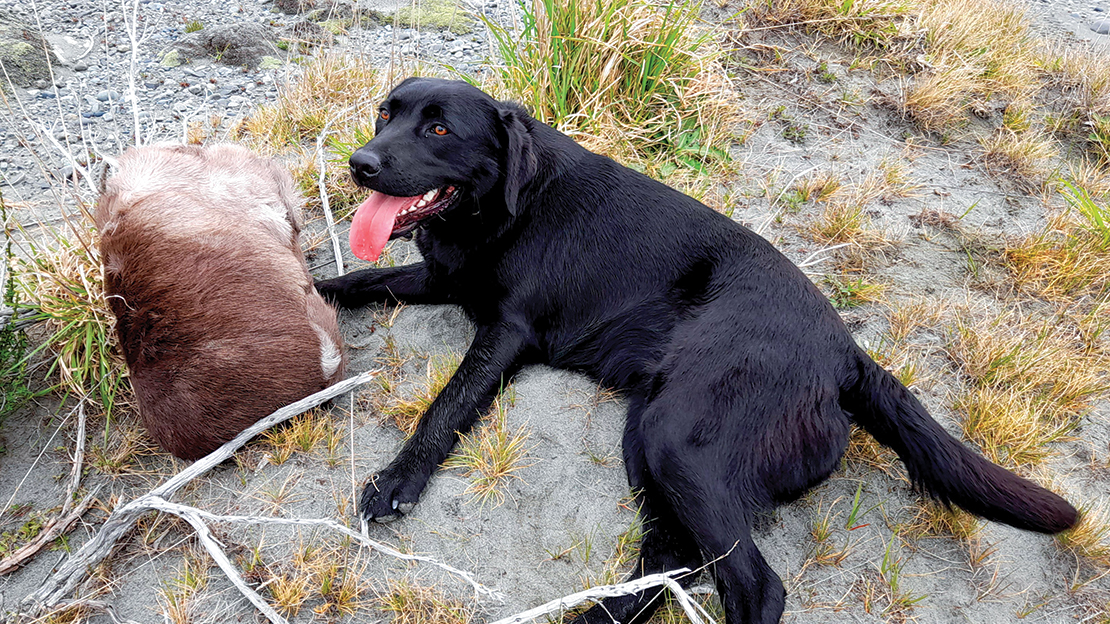
Mini Licking Dave’s Face
The main contributing factor with this behaviour is that Mini is being a pup and attempting to appease Dave as well as showing affection to her pack leader.
Our solution: go back to basics (obedience on lead and ‘sit – stay’) and transfer these commands to the range by placing Mini in the sit and stay position before setting up for a prone, sitting or kneeling shot. Repetition of this drill will transfer into the field – Mini will soon understand there’s to be no licking when Dad’s face is within range!
When setting up for this session, we were reminded that Mini is still on the pup spectrum. She’s a bundle of energy and is struggling to comprehend what’s required of her – running around, jumping, chasing stuff and generally behaving like an excited pup.
Never be afraid to go back to basics. Get out the lead and head off for a short walk with your dog at heel and throw in a few ‘sit – stay’ commands. After doing this, Dave soon had her back into training mode.
Mini Race Coursing
The main contributing factor to this behaviour is that Mini is still a pup and looking to Dave for guidance and reassurance. Her confidence to work out front, independent of Dave, needs further development.
Our solution: replicate hunting conditions with a large odour in the wind that’ll pull her away from Dave once she’s crossed the cone of scent – leading Dave to the odour will encourage her to work out front at 5-15m. Success! Success! Success!
From previous training sessions, we realised the ‘wolf brain’ was alive and well within Mini.
“Dogs will do the least amount of work for the most amount of reward.”
When laying odours or tracks for dogs to pursue, the number one rule as they progress through the exercises is to ‘maintain the integrity of the odour’.
What this means … in the early days, we allow the dog to watch us place the odour and then encourage them to locate it. What they’re actually doing is tracking our footprints to the rough vicinity and then switching to using their nose to locate the article/odour (wolf brain = follow the human = find the food/prey).
Maintaining the integrity of the odour, in essence, means removing the possibility that your dog is tracking you or cueing on the scent you’ve left on the target odour (i.e., your smell).
We do this by using disposable gloves to handle the target odour – thus not leaving your scent on the skin – or by using a fishing line to launch a skin into an area, thereby not leaving your personal track for the dog to follow. Another technique is the vehicle drop method. Drive through the target area in all manner of directions leaving tyre tracks everywhere before dropping your skin out the window (all the time, handling the skin with gloves on).
We used the latter technique when laying the scent for Mini – leaving the skin in situ for two hours prior to the search commencing. This allowed the cone of scent to establish itself and therefore gave Mini the best possible chance of locating it. Success! Success! Success!
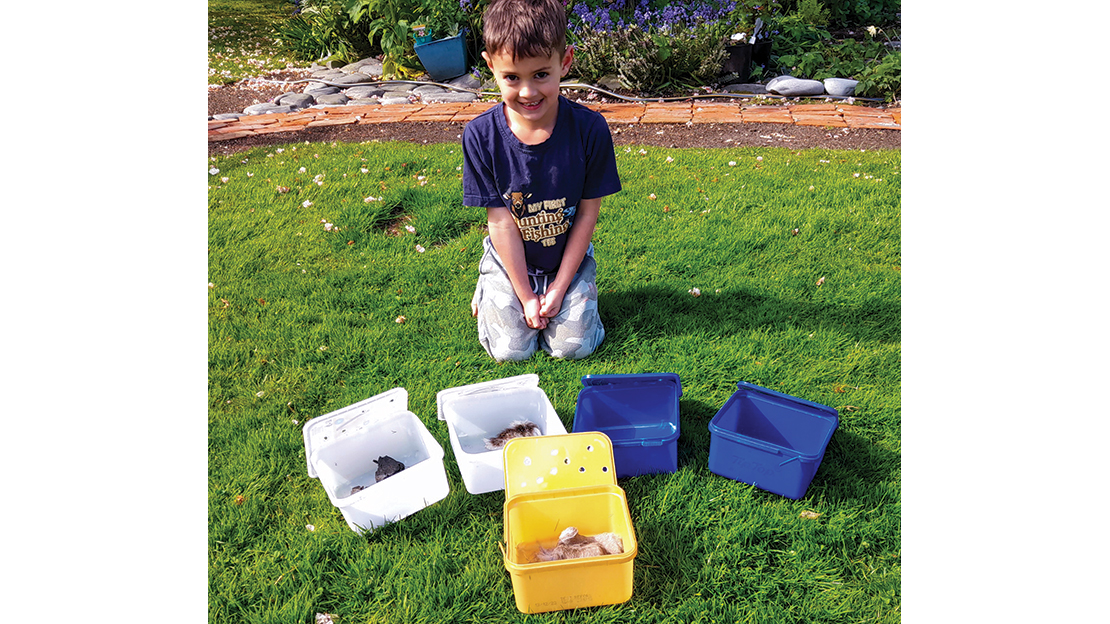
Non-Target Odour Training
Now that we have Mini tuned into her target species (fallow and red deer), she can progress to non-target odour training. Just as we’ve shown Mini what to find, now we must show her what to ignore.
This training system can be explained with this truth …
“When training, we must allow the dog to fail safely and then gently show them what success looks like.”
I’m assuming we’ve all seen the trick where a pea is placed under one of three upturned cups with some smart-arse moving them around rapidly? The question he asks: “Which cup is the pea under?”
This system employs the same principle. However, there are more than three cups – there are five ice-cream containers with holes drilled in their lids. Four containers hold non-target odours, and one contains the target odour (‘the pea’). We line out the containers on the ground – knowing which container holds the target odour – and we introduce our dog to each container in succession, always starting with the search command (“Seek it out!” being mine). When our dog sniffs and shows interest in a non-target odour, we gently correct the dog with a reprimand (a low “ahhhhh” is my reprimand) and encourage them to seek the next container in sequence. When they reach the container with the target odour inside and start to paw at it, nose it over or pick it up and run away with it, praise them and make a big fuss over them. Good dog! Good dog! Good dog!
It helps to have a second set of hands present so you can concentrate of making a fuss of your dog while the other person shuffles the containers around again.
Make sure you shuffle the odours around after every search – the wolf brain will return to the target container’s location without sniffing the non-target containers. “Where’s the pea?” is the name of the game.
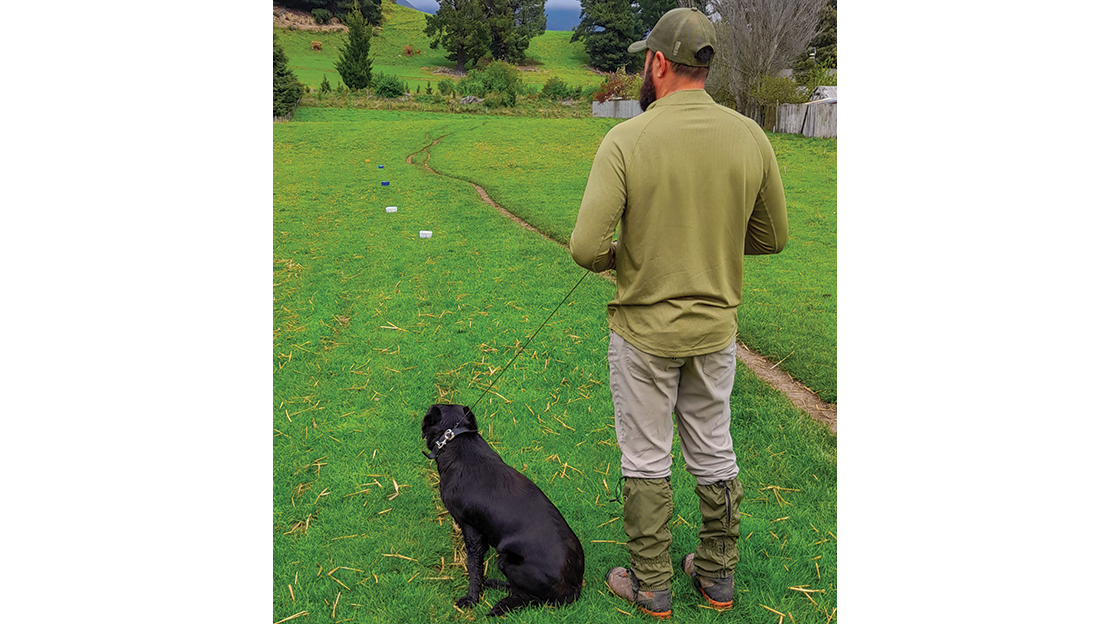
Like all training, short and successful sessions of three to five minutes tops is the ticket. Never allow your dog to get bored with the game.
When it comes to selecting non-target odours for your training, think about the environment you’re likely to hunt in and the temptations your dog may encounter there. For example, if hunting farmland, include sheepskin, lambskin, sheep poo, rabbit skin, hare skin, etc. If hunting public conservation land where 1080 has been dropped in the past (obviously once the caution period has been lifted), include possum carcasses and dead rats – both freshly decomposed and more importantly, mummified carcasses. (Throw carcasses into the hollow of a tree to mummify over summer before using them.)
When an animal is killed by ingesting 1080 and fails to decompose – e.g., crawls into a log, dies and then mummifies – 1080 will remain in the animal’s gut sack and still be viable months after death. A dog that scavenges carrion is susceptible to secondary poisoning. This technique is one way of training your dog not to scavenge.
An added benefit of this system is the more non-target odours you can expose your dog to and allow them to fail safely, the more confidence you’ll have in your dog when their behaviour changes when out hunting. By doing this training, you’ll have a high degree of confidence he or she is in the target odour and not a decomposing possum.
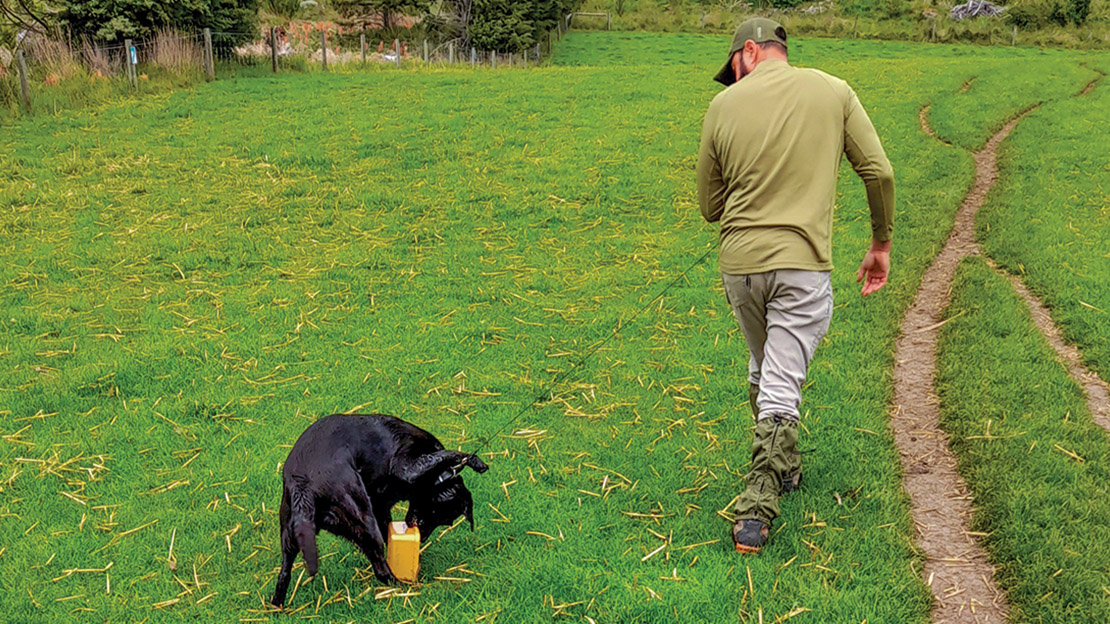
Conclusion
This brings our dog training series to a close, and if you’ve been following this, you now possess the building blocks to embark on the rewarding journey of training a hunting dog.
I’ve been lucky in my life to meet and work with some of the best dog people in New Zealand, and on top of that, I was paid to learn from them. Such a privilege.
As I said in article one …
“Dog training is like baking a cake – every trainer has their preferred recipe. The trick is to watch and listen to other trainers, take the bits from their recipe that work for you and your dog, and discard the bits that don’t.”
We have some wonderful dog breeders and dog trainers in New Zealand who are more than willing to provide you with a dog and a training programme to help you get started. If this is your first dog, my one piece of advice is to find yourself a mentor – someone who has a proven track record of failing and then going on to succeed … someone who’s willing to take you under their wing and pass on their wisdom.
My last tip before heading out the door for a hunt with my hairy four-legged mate, Russell: You’ve found a mentor … someone at the local NZDA who knows a thing or two about training hunting dogs – a regular Cesar Millan – and you’re wondering if this is the guy to help you on your dog-training journey. Pro tip: ask to see what’s in his freezer …
Don’t tell me, show me!
Best of luck, whanau.

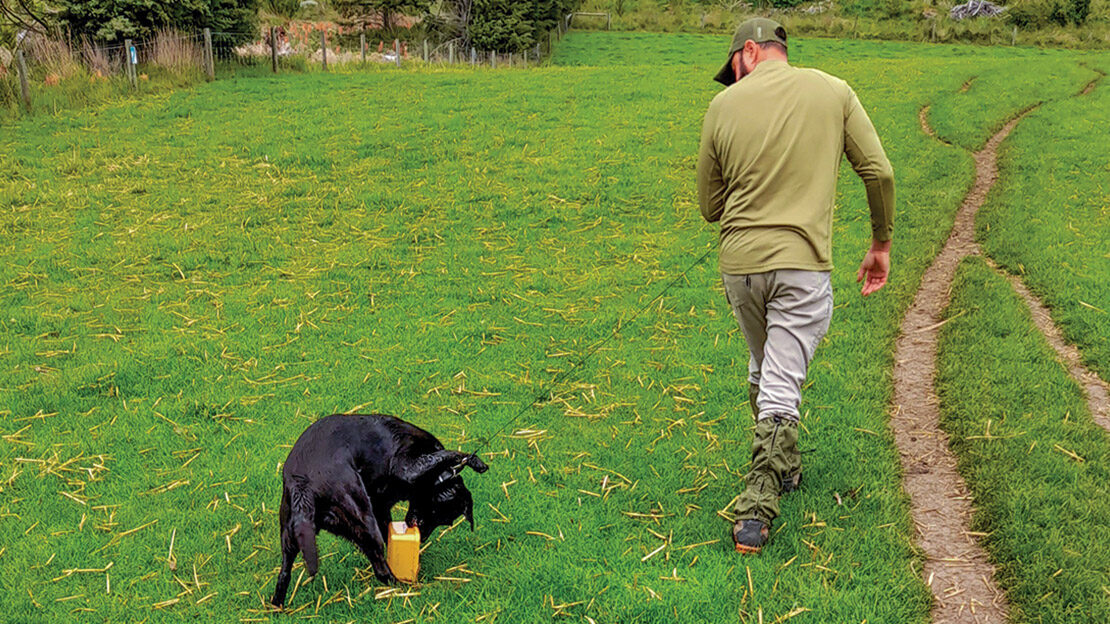
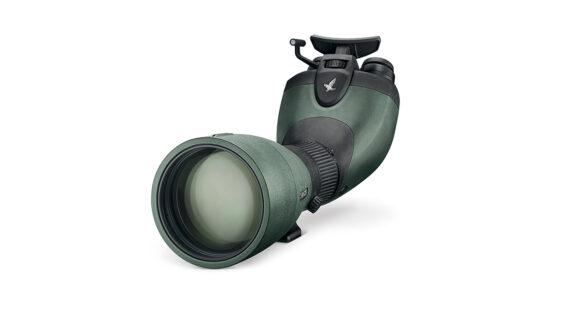
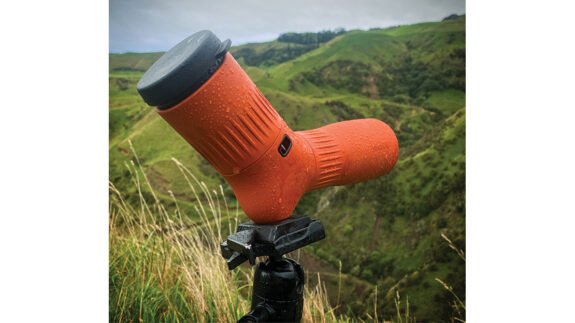

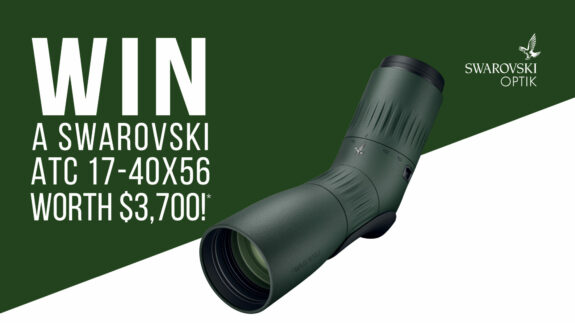
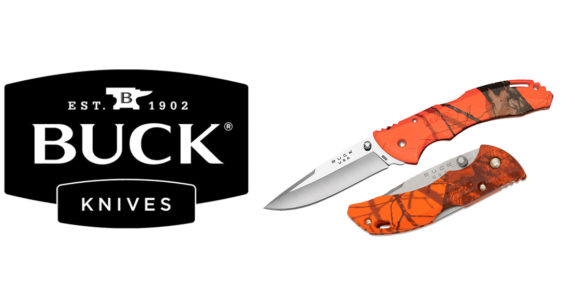
SHARE YOUR BEST PICS #NZRODANDRIFLE